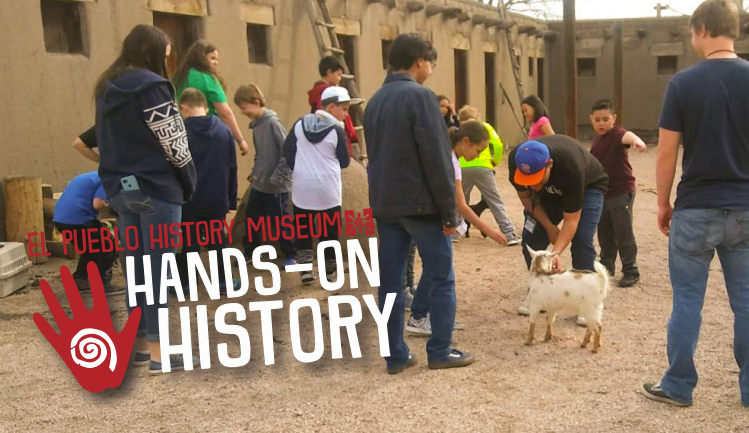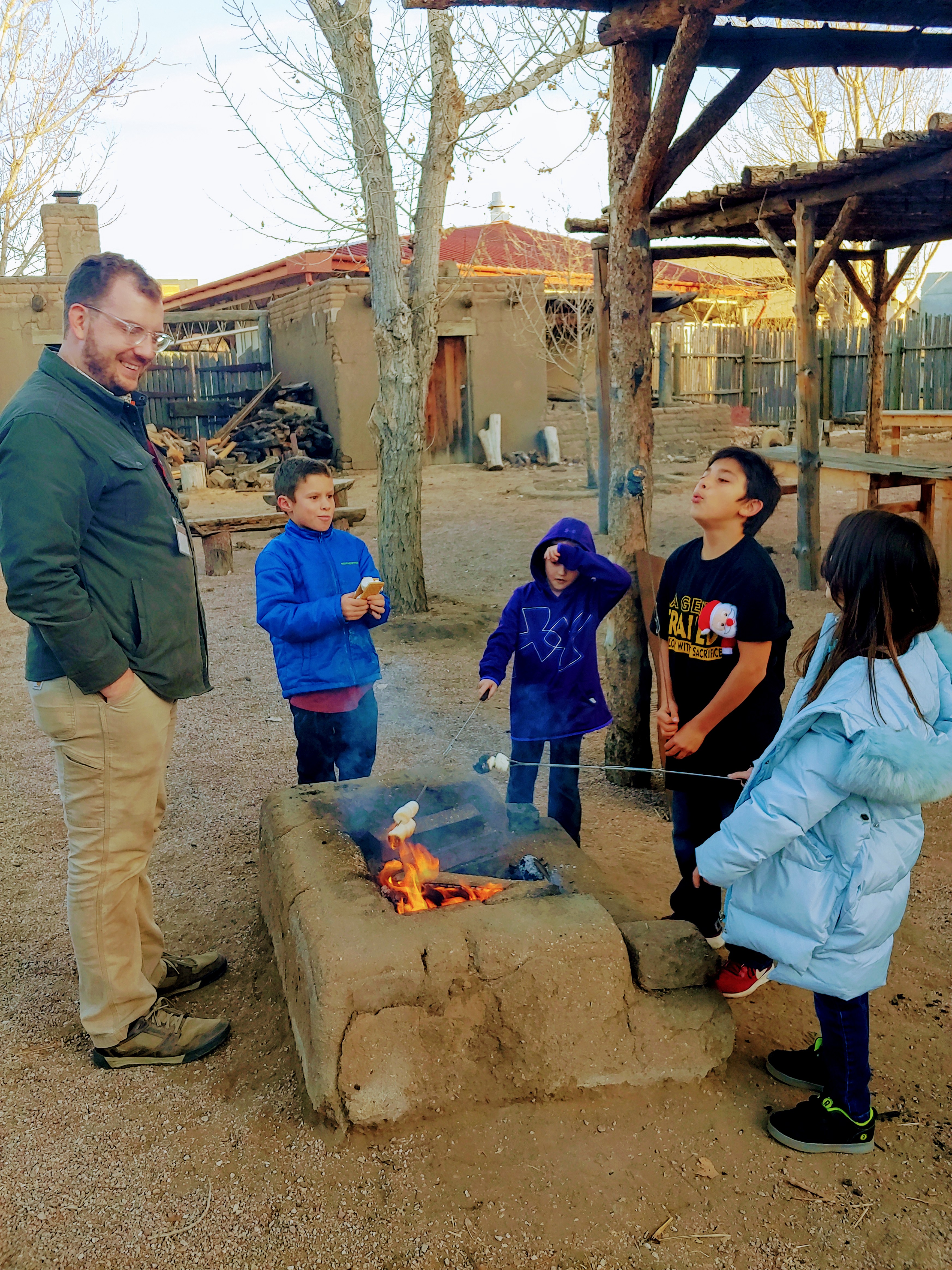Story
History Education that Serves Working Families
Hands-On History, a unique program at El Pueblo History Museum in Pueblo, Colorado, began several years ago as an after-school camp and has since evolved into an all-day educational experience. Most important, this program was designed to serve and support working families of Pueblo.
Just last August, Pueblo City Schools, which includes the majority of the schools within city limits, made the transition from a five-day school week to a four-day week schedule. This change had an immediate impact on the lives of thousands of community members. While some families definitely enjoy the extra time they can spend together and can plainly see the benefits of the new schedule, other families are not as lucky. Many parents and guardians have to work on Fridays, especially in lower-income households, leaving them in a difficult position. If their children aren’t at school during the day, but no one can stay at home with them, then what will the children do all day? And what about children who are still too young to safely spend the day alone?
Local organizations including El Pueblo History Museum stepped forward to fill that role. Starting in fall 2018, the Hands-On History program expanded. It now takes place every Friday from 8 a.m. until 5 p.m. The full-day educational program offers a collection of classes centered around history and skills, intended to provide students with an educational, experiential, and unique opportunity.
Hands-On History serves the community in part through the wide variety of scholarships and discounts that El Pueblo History Museum offers. Aside from the discount given to museum members, scholarships are awarded for families enrolling more than one child, families who pay in full before the first day of classes, and families who are eligible for free or reduced lunch from Pueblo County school districts.
“As a parent, I was allowed to volunteer, join the museum, and explore a few other routes,” said Sabrina, the parent of one of the students enrolled in this spring’s semester, “and I was able to lower the cost of the program—from January to May, mind you—to under $150. When considering the cost of childcare, proper nutrition, and the thrilling education and fun, this one was a no-brainer for me.”s at El Pueblo History Museum, seeing their children put on display everything they’ve learned from Hands-On History.
As well, Hands-On History is not just a place for kids to go when they don’t have school. It is a fully educational experience, providing a wide variety of classes on many topics to make sure that students are learning about history, culture, and more in unique and engaging ways. The teacher of each class is an expert in their field and is qualified to teach it. For example, the teacher of the folklórico class, Iskra Merino, has a degree in folklórico dance; the teacher of the survival class, Tommy Farrell, was not only an Eagle Scout but also worked professionally with Boy Scouts of America for a decade.
“What’s important is involving the community, and reaching out to find local experts,” said Tamara Trujillo, education coordinator at El Pueblo History Museum. “If you reach out, people will respond. You might not be able to find a filmmaker or a folklórico professional every time, but you might discover someone local to the community who is an experienced dancer, sculptor, or fiber artist. Hands-On History is special because it brings together people from our community as teachers to students who may not have otherwise had the opportunity to learn new skills.”
Another such expert working with Hands-On History is Dr. Mary Jane Sullivan, a professor of film studies at the University of Colorado in Colorado Springs, who taught a special documentary filmmaking class during the spring semester.
With Dr. Sullivan’s guidance, students in the filmmaking class created their own documentary. The students came up with their topic, wrote their own script, acted in the film, and even directed and took turns behind the camera.
The filmmaking class has quickly become a favorite among the kids in Hands-On History. “We’re making it as we’re going, and we each get to direct our own part,” said Alano, one of the students in the class. “We come up with the idea and then we practice with someone directing. If we like it, we film it, and everybody is in the scene except the person behind the camera. We’re going to start editing soon, too.”
Another popular class is homesteading, which focuses on learning useful crafts, including sewing, cooking, and stitching. This is the favorite class of Lilith, another Hands-On History student, who is enthusiastic about crafts. “You make things just like in the old days,” she said. “Just today we stitched bunny dolls for Easter, and a couple days ago we made food like pancakes. You get to cook in the survival class, too. They cook in the hornos,” she added, referring to the traditional outdoor ovens made of mud and adobe re-created in the Trading Post behind El Pueblo History Museum.
Mia’s favorite class is not homesteading or filmmaking. She prefers folklórico, a high-energy class focused on traditional arts. “We get to dance every time, and last time we also made a bark painting,” she said. “But my favorite part is when we do the dances.”
Sabrina, the parent of one of the students, expressed how much her daughter enjoys Hands-On History. “I cannot convey to you the amount of joy my daughter expresses in looking forward to this program each week,” she said. “She studies 3-D art, filmmaking, and pottery, and has made friends from school campuses all over Pueblo.”
Each Hands-On History class features a long-term, ongoing project of some kind—whether it’s a physical art or craft, a live performance, or the documentary made in the filmmaking class. The students worked to create a final project to present on the last day of the spring semester. On May 3, parents and relatives attended a special presentation of all these projects at El Pueblo History Museum, seeing their children put on display everything they’ve learned from Hands-On History.



